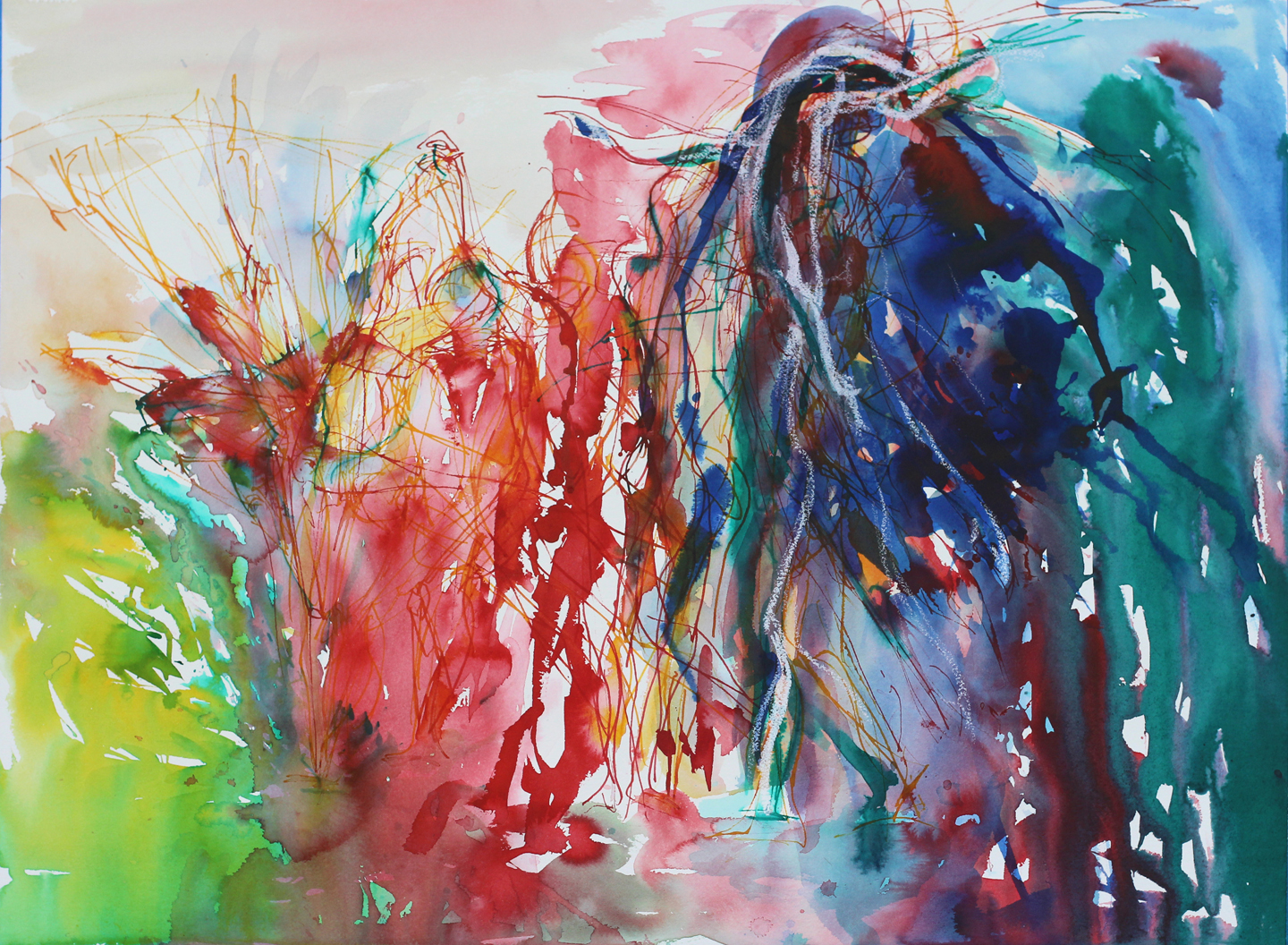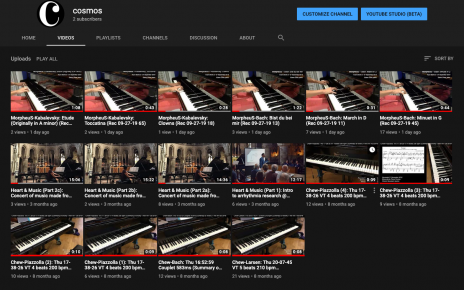This position is now closed.
Job description will shortly be on the CNRS Job Portal in English and in French with application link. Apply HERE.
Note: applications are solicited in English but instructions are in French; non French speakers may find the DeepL online translater useful.
Title of post
PhD M/F in computational data science for music structure discovery
General information
Reference: UMR9912-ERC COSMOS-2019/02
Workplace: PARIS 04
Date of publication: Thursday, 4 July 2019
Scientific Responsible name: Elaine Chew
Type of contract: CDD Doctoral
Contract period: 36 months
Expected start date of thesis: 15 October 2019 or later
Proportion of work: Full time
Remuneration: €2135 monthly gross
Description of the thesis subject
Applications are invited for a PhD position as part of the ERC ADG project COSMOS: Computational Shaping and Modeling of Musical Structures (European Research Council Advanced Grant, COSMOS, Principal Investigator: Elaine Chew, cosmos.ircam.fr).
COSMOS aims to use data science, optimization/data analytics, and citizen science to study musical structures as they are experienced and created in performance, and in unusual sources such as arrhythmic cardiac data.
The project’s research themes are as follows: i) to find new ways to represent and explore variations in recorded performance and time-varying sequences; ii) to harness volunteer thinking (citizen science) for music performance research by focussing on structures experienced and problem solving; iii) to create sandbox environments to experiment with making performed structures; iv) to create theoretical frameworks to discover the reasoning behind the structures perceived and made; and, v) to foster community engagement by training experts (including retired musicians) to provide feedback on structure solutions so as to increase public understanding of the creative work in music performance (cf. cosmos.ircam.fr).
The proposed thesis will focus on developing mathematical representations and computer tools and interfaces to explore the space of possible interpretations in musical performance through the finding and manipulation of musical structures shaped in performance. Because of similarities between music and cardiac sequences, the techniques developed for characterizing variations in performance will be simultaneously used to study electrocardiographic recordings of abnormal heart rhythms.
The work will focus on data acquisition and preparation, and transformation of this primary data into musical structures by creating a vocabulary of musical structures such as groupings (chunking), articulation, gestural units, prominence, and focal points; devising mathematical and graphical representations of these structures; designing engaging interfaces and deploying them for large-scale participatory markup of such structures; using optimization and statistical techniques to analyze the citizen science data; and, devising and implementing computer algorithms to automatically extract the musical structures.
There exist complementary funding opportunities through the ERC to allow project collaborators to engage more fully in “proof of concept” activities to turn research outputs into commercially or socially valuable propositions.
Bibliographical references:
Chew, E. (2018). Notating disfluencies and temporal deviations in music and arrhythmia. Music & Science, Volume 1, published online Sep 24, 2018, pp. 1-22.
Chew, E. (2016). Playing with the edge: Tipping points and the role of tonality. In Stephen McAdams, David Temperley, Alexander Rozin (eds.): Milestones in Music Cognition Special Issue, Music Perception, 33(3):344-366.doi: 10.1525/MP.2016.33.03.344.
Herremans, D., E. Chew (2016). Tension Ribbons: Quantifying and visualising tonal tension. In Proceedings of the Second International Conference on Technologies for Music Notation and Representation (TENOR), Anglia Ruskin University, Cambridge, May 27-29, 2016.
Smith, J. B. L., I. Schankler and E. Chew (2014). Listening as a Creative Act: Meaningful Differences in Structural Annotations of Improvised Performances. Music Theory Online, 20(3).
Smith, J.B.L. and E. Chew (2013). Using Quadratic Programming to Estimate Musical Attention from Self-Similarity Matrices. In Proceedings of ACM Multimedia, October 21-25, 2013. MM’13, Barcelona, Catalunya, Spain, 113-122.
Work context
The research will be conducted at the UMR 9912 STMS (Sciences and Technologies of Music and Sound), a joint research unit of the CNRS (Centre national de la recherche scientifique), IRCAM (Institut de Recherche Coordination Acoustique/Musique), Sorbonne University, and the French Ministry of Culture. STMS is located at IRCAM (1 place Igor-Stravinsky, 75004 Paris), in the heart of Paris. IRCAM is a world renowned center for contemporary music production; it is organizationally linked to the Pompidou Center.
Facilities include music studios at IRCAM. In addition, researchers have access to IRCAM’s software, computing facilities, recording equipment, and media library, as well as the CNRS and Sorbonne University’s online libraries. As part of the ERC COSMOS project, we are acquiring a reproducing piano that is unique in Europe. The data resources will include MIDI recordings of legendary performances and anonymized electrocardiographic data of cardiac arrhythmias.
Constraints and risks
Short periods of travel within France and abroad, such as to conferences to present accepted peer-reviewed papers and posters, should be expected. Candidates for this position should be aware that the offices of most of IRCAM’s research teams are in an underground building with a central skylight.
Supplementary information
Candidates should have an excellent background (Master’s or Bachelor’s degree) in one or more of the following fields: computer science, mathematical sciences (including operations research and statistics), music technology, or a related field. Additional skills in musicology, musical performance, music theory, music composition, or bio- or biomedical engineering are highly desirable.
Essential skills include the ability to design, develop, and use scientific computing software, tools, and methodologies, and experience in applying data science techniques such as optimization, statistics, scientific visualization, and machine learning. The work requires sound knowledge of programming languages such as Python, Matlab, or C++. A willingness to learn signal processing software and other dedicated languages is also expected. Flexibility and adaptability, creativity and authonomy, as well as the willingness to learn and develop one’s skills are important.
Strong written and oral communication skills in English (ability to operate in French is desirable) so as to be able to present at international conferences and write articles in scientific publications are essential.
We are looking for a PhD candidate who will become fully integrated in the project’s interdisciplinary team. The ability to work collaboratively with others of diverse backgrounds and skill sets will be essential. Part of the project will involve the organizing of events and liaising with stakeholders; hence, strong communication and organizational skills will also be useful.
Other:
Applications must include a detailed CV; at least two references (people who may be contacted); a one-page cover letter; a one-page abstract of the Master’s thesis if applicable; up to three samples of writing such as published articles; and, documentation of grades obtained for the Master’s or Bachelor’s degree.
The closing date for sending applications is 1 September 2019. Interviews will take place the latter half of September 2019. The expected start date is 15 October 2019 or later, depending on whether the candidate is French, European, or from a non-EU country.




